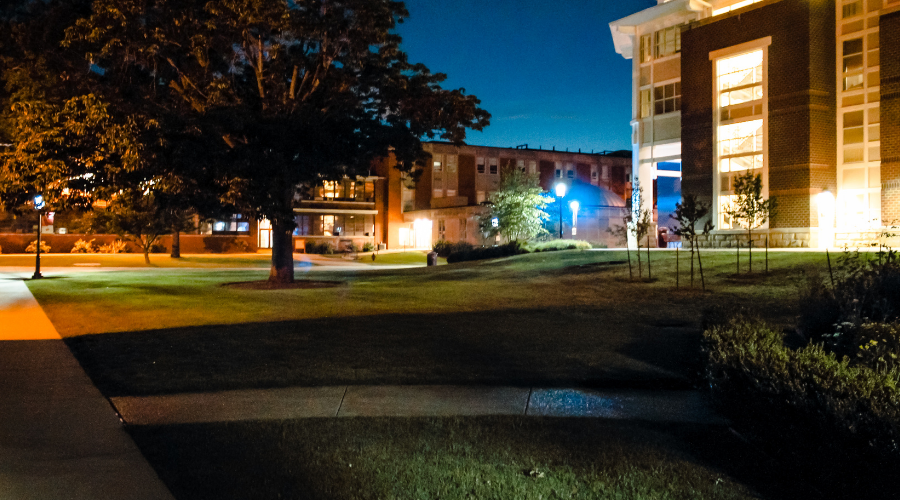Using Video Surveillance Technology to Locate Missing Persons on College Campuses

Leveraging Video Surveillance to Investigate a Missing Person
College campus security professionals handle a broad variety of public safety issues, ranging from theft, assaults, medical emergencies, and missing persons. This blog post explains how campus security officers and administrators can resolve missing persons cases more quickly by using a combination of video surveillance cameras and video content software.
Contrary to popular belief, a person need not be missing for at least 24 hours for campus security or law enforcement officials to respond, though they are not legally required to notify authorities or emergency contacts until after the student has been missing for 24 hours. Although adults have the legal right to voluntarily go missing, if the missing person is a university student then the university has legal obligations to conduct a search and investigation, in case the disappearance was involuntary.
A missing person case is always time-sensitive because the person may be in danger. Yet such investigations often require many staff working for hours or days, depending on the length of time the person is missing, the size of the search area, and any risk or endangerment factors (a natural disaster, known abusive relationship, suicidal tendencies, or weather and geographic conditions).
Find the Most Recent Sighting
The first step in a missing person case is to find out where the person was last seen, so investigators typically seek out and interview any witnesses who saw the person before he/she disappeared. In addition, since many, if not most, college campuses have large video surveillance (CCTV) networks, investigators can try to find records of the student’s appearance in a campus video surveillance camera. However, although that footage can provide evidence of last sightings, it is time-consuming to manually review video footage, and human observation is seldom 100% accurate.
These challenges can be solved by implementing video content analytics software that is powered by Deep Learning and Artificial Intelligence, because it is able to identify, classify and index objects in surveillance video footage. It empowers operators to conduct filtered searches based on criteria such as gender, clothing type and color, direction of travel, etc. For example, investigators can search for a person based on what he/she was last seen wearing (e.g., an orange jacket, black hat, blue jeans). The software can analyze archived video footage, or in real-time, to help security teams accurately and quickly pinpoint a person or object that matches the description. The ability to comb through high volumes of campus video footage across multiple cameras in a matter of minutes or hours instead of days saves investigators crucial forensic review time to resolve an incident.
If search-related images of the missing person show that he/she was with another person or group, investigators can also search for those persons in archived footage, by using appearance similarity filters. Analytics operators can also set up a customized real-time alert if someone matching that appearance description appears in a camera feed. This is tremendously useful to help operators more effectively identify potential suspects and track the missing person.
Face Recognition and License Plate Alerts for Missing Persons
To take it a step further, some comprehensive video content analytics software includes “in the wild” facial recognition, a biometric technology that extracts faces detected in live or recorded video, then compares them to digital images (a still photo or video image) in a watchlist. As mentioned above, the software facilitates real-time alerts to notify investigators when a potential face match appears in a live video camera feed, and searches of archived footage. Investigators can then assess the image to determine whether it matches that of the missing person and, if so, follow up on the lead accordingly. Video analytics operators can also use face recognition to match the images of persons who were last seen with the missing person; they can search archived footage, and/or upload once a still image or video frame image of the person(s) to a digital watchlist, then set up custom alerts to notify investigators when a potential match appears on camera.
In some jurisdictions, face recognition is not allowed. For those situations, operators can simply search using appearance similarity. Furthermore, if the missing person’s vehicle license plate is known, the video analytics operator can use license plate recognition to create a custom alert to track any sightings of that license plate in a real-time video feed.
By complementing their existing video surveillance networks with video content analysis, campus security teams can save valuable time in the course of a missing person investigation, resulting in faster case resolution, and possibly saving lives. Read more about how the combination of video surveillance and content analytics works in a variety of ways to improve campus safety and planning.
Signup to receive a monthly blog digest.